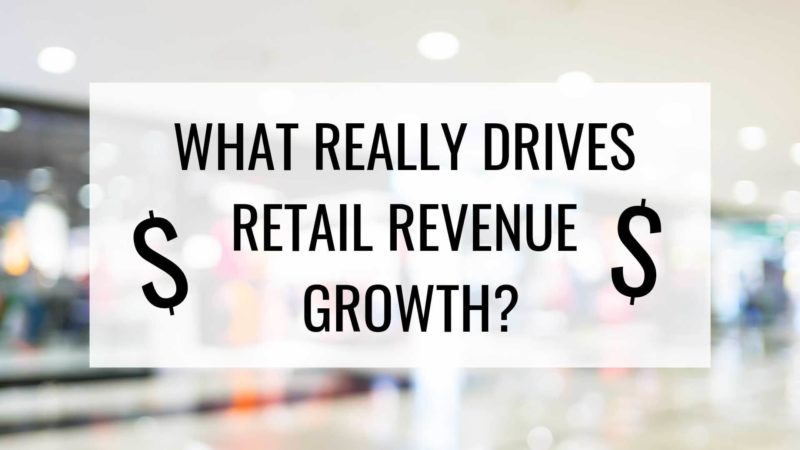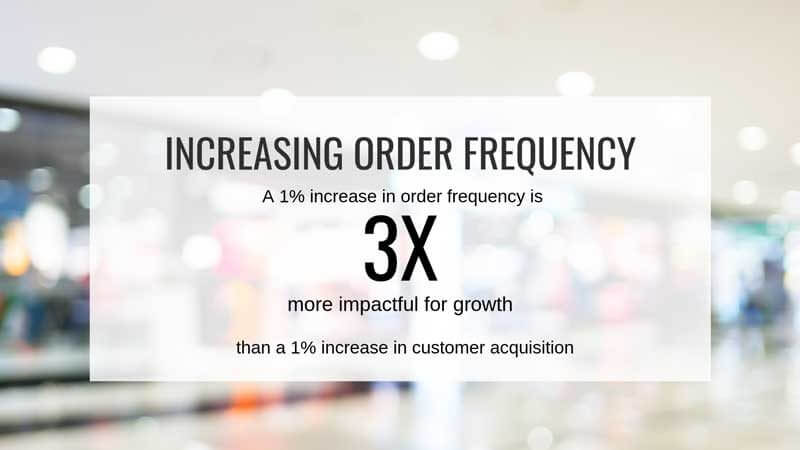The 5-step approach to driving retail growth
Here's what successful retailers are doing to survive and thrive in the current competitive environment.

But it’s not all doom and gloom. Brick-and-mortar retailers like Sephora, Zara, and Nike are bucking the trend. So are ecommerce superstars like Bonobos, Warby Parker, and Everlane. These brands obsessively prioritize customer insights, and have invested in the technology to deliver a seamless customer experience across channels.
As the hottest season of the year for retail approaches, new research from customer analytics firm Custora (disclosure: my employer) has uncovered some surprising insights about what’s driving retail growth. The research looked at more than 40 of our retail clients to understand which metrics are most correlated with positive year-over-year revenue growth.
Customer acquisition vs average order frequency
The findings? For obvious reasons, high-growth brands invest significantly in acquiring new customers. It’s a sure-fire way to grow top-line revenue. But it’s actually relatively inefficient. In fact, a 1% increase in order frequency is 3x as impactful from a growth perspective as a similar increase in the number of customers acquired, and driving order frequency is often far less costly.
To put it differently: if the average customer buys once every 180 days, shortening that replenishment window to just 178 days can drive nearly 3% revenue growth.
That’s a pretty stunning discovery – and savvy retailers have taken notice. They’re increasingly investing in tactics like welcome series, hybrid subscription models and personalization across channels and devices to drive brand engagement and product discovery — all in the hopes of shortening inter-purchase time.
The impact of increasing average order value
Another powerful finding buried amongst the findings of the research will also be helpful to retailers looking to drive growth. Specifically, a 1% increase in average order value (AOV) is correlated, on average, with a 1.3% increase in revenue.
How, then, do retailers increase basket size? Our research suggests that the most successful and data-driven retailers excel at one of two dimensions:
- Increasing items per order (cross-sell): A fast fashion brand uses predicted individual-level product affinity scores to suggest complementary products that a customer might be interested in.
- Increasing average item price (upsell): An apparel and footwear retailer scores customers based on their predicted optimal price point, and shows big-ticket customers premium merchandise and full-price new arrivals.
The challenge is that, by and large, growing basket size is seen as more difficult than driving repeat purchases. As one retail executive put it: “There’s a one-size-fits-all playbook for driving repeat orders. The promotions and touchpoints are time-tested. But increasing AOV requires personalization.”
There’s a kernel of truth to this: the most effective AOV growth strategies start with deep customer insights. But many retailers don’t realize how straightforward the playbook – and attainable the results – can be.
The most successful retailers follow a 5-step methodology
- Aggregate customer data: bring together transactional, CRM, and customer engagement data to create a complete picture of each customer’s relationship with the brand.
- Set goals: identify whether your brand’s primary opportunity is to cross-sell or upsell, and set goals accordingly. One rule of thumb: increasing items per order is generally a good starting approach for retailers of relatively low price-point goods, impulse purchases or a wide merchandise assortment. Retailers of homogeneous or high-consideration goods might instead focus on increasing item price through upsell.
- Identify relevant insights: depending on which AOV lever you choose to focus on, analyze your customer data for insights about what types of products tend to get purchased together — and which customers tend to buy at the premium or budget end of each category.
- Experiment: The most successful retailers adopt a crawl-walk-run approach – starting simple (e.g., in a single channel, or focusing on a single segment) and progressively iterating as they find what works. For example, a retailer looking to implement a cross-sell approach might start with a single email tile or a single product recommendation on the checkout page. Measure impact on the goal in question as you iterate through different tactics.
- Optimize and automate: Once a retail has identified tactics that work — for example, site personalization based on a customer’s predicted price point — it’s essential to ensure that insights are being refreshed continuously and are integrated directly with marketing execution tools.
Ultimately, increasing AOV represents an untapped area of opportunity for brands as they fight not just to survive — but to grow — in the new era of retail.
Opinions expressed in this article are those of the guest author and not necessarily MarTech. Staff authors are listed here.
Related stories
New on MarTech

